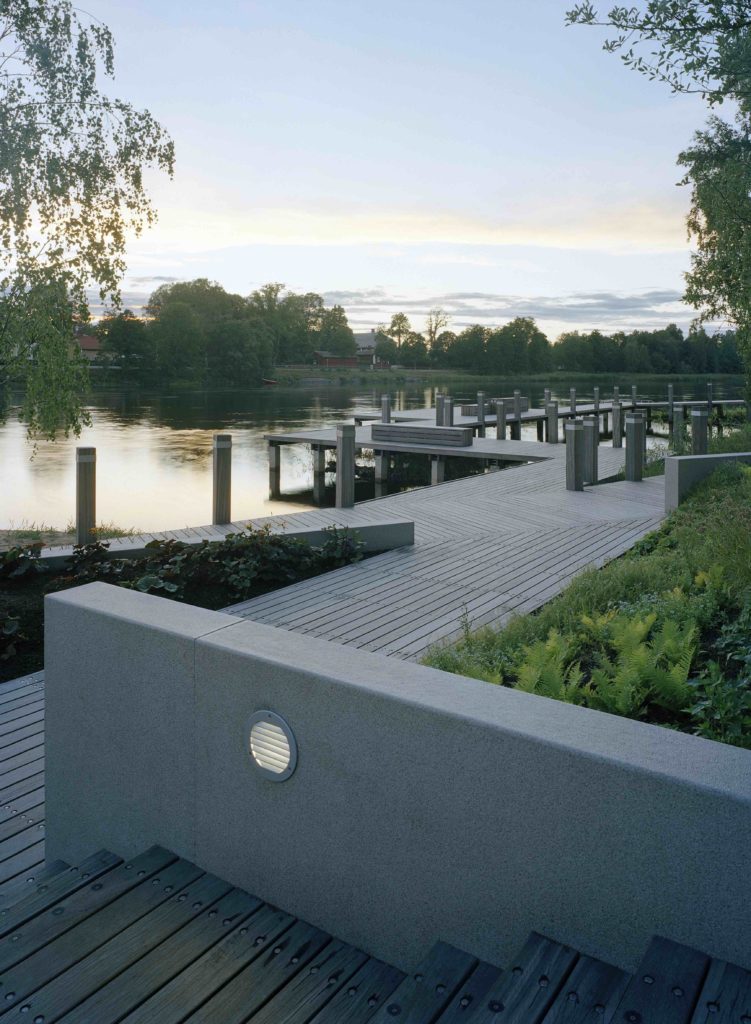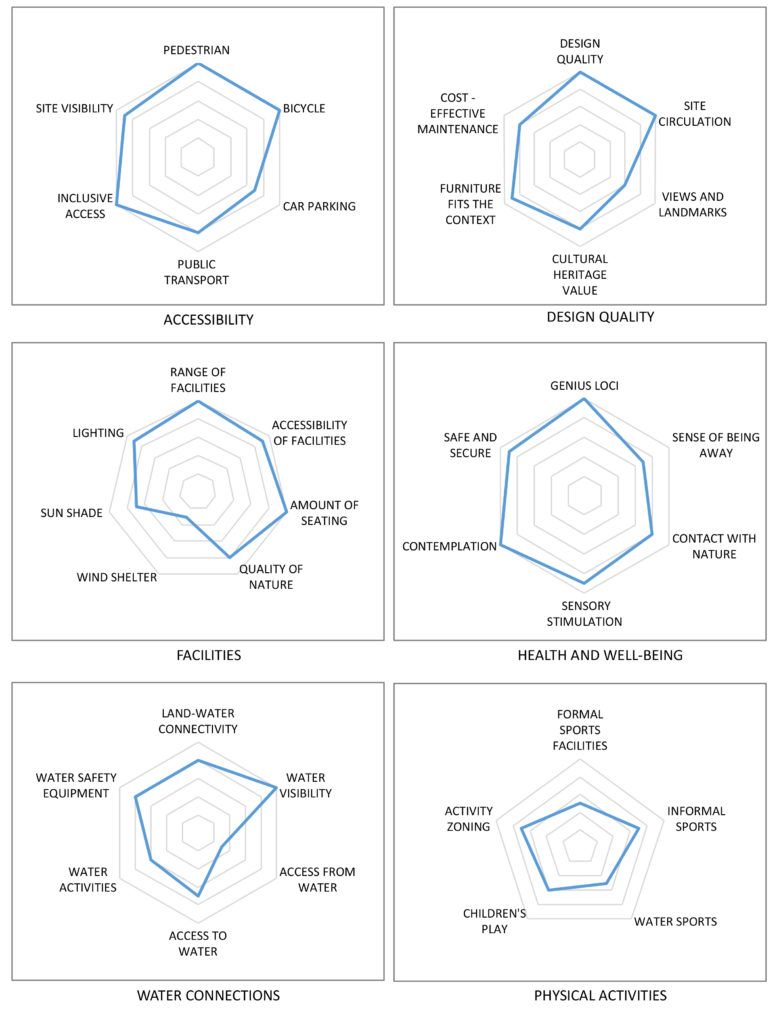
Architect
Thorbjörn Andersson, SWECO Architects
Type of Area
Large river with natural banks
Land/water interaction
Pier
Promenade
Sandy beach
Built Environment Types
Moderately built
Moderate green
Scale of Impact
District/ neighbourhood
City
Regional
Intervention Scale (Spatial)
Moderate site
Project Types
Riverfront development
Outdoor Recreation
Public green space regeneration
Urban/ Rural
Inner urban area
Visibility and Openness
Fully enclosed
Fully contained view
Contemplating the River.
The site is located at the cultural centre of the city Karlstad in Sweden, its closeness and abundant space ensuring its popularity. The project has been built on a peninsula of sand that offers a platform from which to gaze at the passing river throughout the year providing a view that changes with the seasons. The river is a dominant feature of the city and the peninsula provides a dramatic point where the land meets the river.
The project is an extension of a museum park built in 1927. Originally the museum was built on the shore of the river but over time fluvial sand deposition occurred leading to the formation of the beak shaped peninsula. The aim of the park was to prolong the central city axis on which the museum sits and allow it to fade into the almost unlimited river view.
A system of boardwalks has been built along the water’s edge of this previously neglected space. These extend over the water on the western shore allowing people to get closer to the water and enjoy the magnificent riverside landscape, especially at sunset. The floating wooden decks also allow increased socialisation and a place to relax.
The park grounds have been designed as a series of undulating ridges and valleys. Every other valley contains a different habitat and the valleys in between offer further areas for rest and play. The granite-edged terraces mark the contour lines of this undulating terrain and provide seating for an open air-theatre, which holds various events and functions. The ridges are designed to restrict the view along the length of the peninsula but open up the river side views.
The creation of a pocket beach further adds to the relaxation potential of the place as users can paddle in the water, sunbathe and picnic. It is not suitable for swimming, though, due to the strong current and cold water.
Perception and Meaning
Place identity
Place attachment
Accessibility
Sense of ownership
Sense of place
Health and Wellbeing
Restorativeness
Aesthetic experience
Place affordance
Tranquility
Attention
Interaction with Water
Visual
Tactile – Partly in water

Website of the project:
http://thorbjorn-andersson.com/downloads/SandgrundPark.pdf
Google map reference
As the ratings show the site is very accessible. The paths are suitable for wheelchair use and wooden ramps provides access to the viewing platforms and the beach area. The design quality is high and is an appropriate extension of this cultural heritage site. The views and landmarks are rated lower, but this reflects the site’s aim of directing the focus to the river landscape.
Health and well-being benefits of the site are high and reflects the aim of the project as a place to relax and enjoy the river views. Safety features are also rated highly with safety handrails being provided along the edge of the ramp and the site is well lit at night. It is rated lower for sense of being away, but this reflects its city centre location.
As the view of the water and connection to the river is central to this project it is understandable that the connectivity to the water is high. However, due to its strong current and cold water the actual range of possible water activities is low and the ridged terrain reduces the availability of space for recreational sports; however, this is understandable as it is not within the remit of the project.
